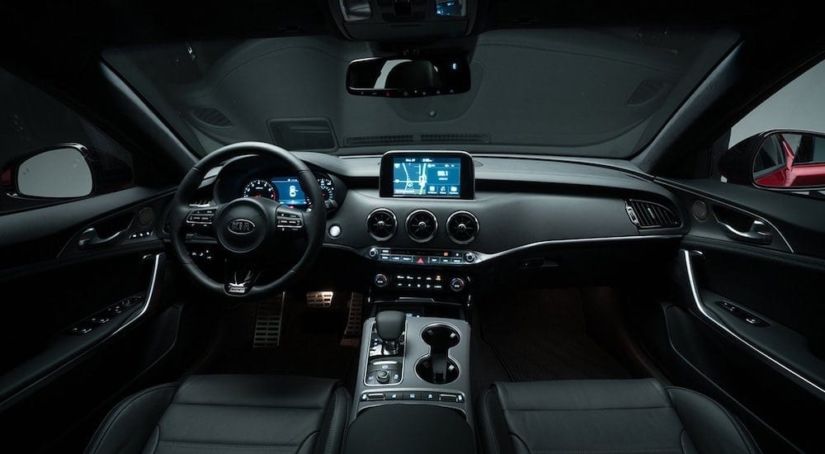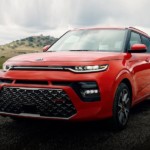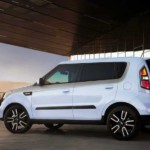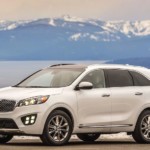I had recently written an article on my surprise realization that the 2018 KIA Stinger marked the first time that the Korean automaker had managed to get my attention. With all due respect, I had simply never given the slightest shred of consideration to buying a KIA.
While my vehicle history tends to favor FCA’s Dodge offerings, I have (at times) considered some of the stronger offerings from most other automakers. Even the current redesigns of the Toyota Camry and Honda Accord have managed to catch my eye once or twice. Unfortunately, KIA just happens to be an example of a manufacturer who never quite registers on my radar.
In fact, I would say that my general ignorance to all-things KIA has reached a point where a visit to their site leaves me surprised by the number of models offered. Sure, I recognize some of the names (mostly from commercials playing in the background of my life) but there are model names that I don’t recognize at all.
In fact, I can’t recall a single time that I have ever even noticed a KIA. Not on the road. Not in a parking lot. Not even a lingering look as I pass by a KIA dealership.
So, why don’t I ever notice KIA?
While I was raised not to judge any book by its cover, let’s be honest…most residents of the first world factor aesthetics into their car buying process. Why? Because appreciation of beauty is subjective by nature. What I consider to be an attractive vehicle, might rate very low in someone else’s opinion (and vice versa). The subjectivity of design is probably the key reason why so many automakers can be successful simultaneously. Between them all, there’s something for everyone.
Truth be told, our choice of vehicle can often serve as a subliminal extension of our identity. I’ll offer myself up, as an example…
For over a decade, I have driven a Dodge Charger. On multiple occasions, people have commented that the vehicle itself, its design and color fit me well. In fact, I’m sure that we’ve all noticed it at some point or another when looking at a person and their car. Not unlike pets who resemble their owners, it’s worth a chuckle, if nothing else.
On the other hand, I’m equally sure that we’ve all witnessed people who seem mismatched with their vehicles. For example, a 7-foot tall man in a Mini Cooper is bound to get your attention. You’d inevitably find yourself wondering how and why that person had reached the decision to buy that particular vehicle.
That said, my subconscious aversion to KIA might be fueled by the lack of impact their design has on me. (Except, of course, for the Stinger) KIA design does little to evoke a stirring of my soul. In turn, I just can’t picture myself in one. Perhaps this is why I fail to notice them?
Seeking the Silver Lining
So, I look through the lineup: Rio, Soul, Forte, Optima, Niro, Sportage, Sorrento, Sedona, Cadenza, K900…hybrid variants scattered amongst them. While they may not be my proverbial ‘cup of tea’ I can appreciate the appeal to some degree.
Speaking to aesthetics, there is a softness to KIA’s overall design; a playful curvature evocative of fun and youthful exuberance. This echoes across each of the segments from compacts to sedans, crossovers to SUVs and minivans.Visible even in the cubic KIA Soul, it becomes a signature design note.
Speaking of the Soul
If we’re going to embrace KIA’s offerings for what they are, the KIA Soul might just be the most on-brand model to examine. Sure, it caters to the same niche audience that got excited about the equally boxy Scion xB and the aptly-named Nissan Cube, but it offers both a distinctive profile and shadow.
Also, the KIA Soul brings a bit more funk than its competition. This is where KIA’s iconic curvature is at its very best. Optimizing the exterior dimensions, it creates a distinctive visual experience coherent enough to temporarily distract you from its welcoming, oversized doors. Both tall and elevated they compliment the spacious interior dimensions, making the Soul extremely accessible to passengers.
Seated inside, the KIA Soul offers strong visibility courtesy of its smart driving position. The layout of gauges and controls convey a strong focus on functionality, and a desire to make the Soul easy to use (by drivers and passengers alike).
Available in three trim levels, each comes with its own powertrain configuration. As someone who appreciates power on the road, I can shift my focus to the (top level) Exclaim trim, seeing as it is the only shot for some real wallop. Unfortunately, its 1.6-liter turbocharged four-cylinder paired with a seven-speed automatic isn’t going to serve up more than 201 horsepower and 195 lb-ft of torque. While not horrible, it just isn’t that exciting. Then again, a 28mpg fuel economy gets a small rise out of my wallet.
But upon closer examination of the Soul, I realize that a number of my friends would like it quite it bit. These friends, in particular, would consider its output to be ‘plenty’. So what about technology? The Bluetooth-enabled Kia Soul has an infotainment system built around a 5-inch touchscreen (with rearview camera) and a six-speaker sound system with satellite radio and USB input. It is also compatible with both Apple CarPlay and Android Auto. Nothing here is revolutionary, but the Soul is confidently equipped.
All in all, the KIA Soul is a strong offering to KIA’s customer base (not surprising since its KIA’s top-seller).
Coming Around
Am I likely to buy a KIA for myself? Let’s be honest, probably not. And since the practical demands of my lifestyle are likely to prohibit me from purchasing a Stinger, the likelihood of my becoming a KIA owner is further diminished.
That said, I’m glad to have had the opportunity to become better acclimated with KIA’s offerings. Although I may not be their target demographic, I have certainly come around to a better understanding of their appeal. And while a KIA may never force my head to turn, I may certainly give greater consideration to those drivers for whom their KIA is a perfect fit.



